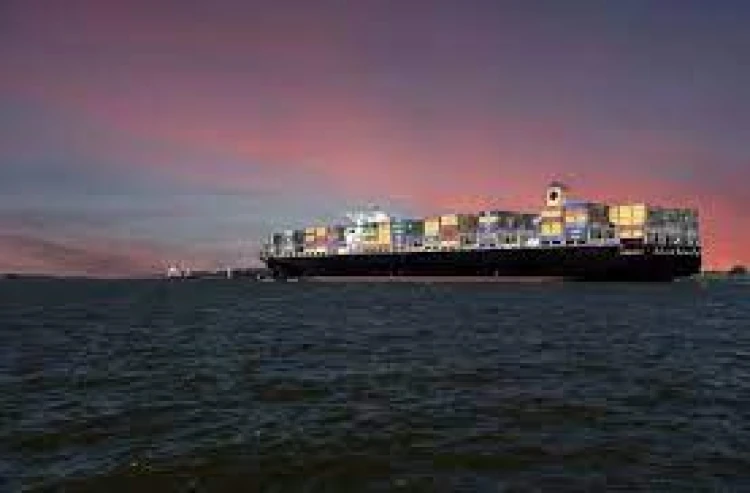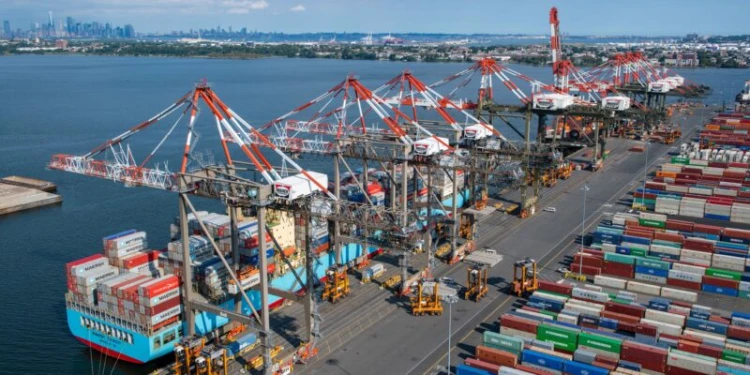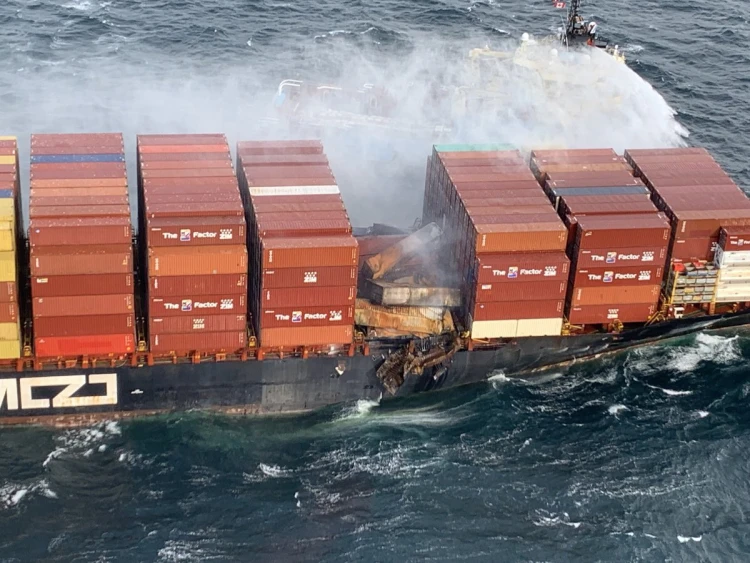How supply chain disruptions are fueling technology innovation
Sunday, 27 November 2022

For as long as humans have shipped goods across oceans, the global supply chain has been exposed to unexpected disruptions.
Natural disasters, international tensions, pandemics and product shortages can all have a domino effect on the supply chain, jeopardizing people’s access to essential goods.
It has been no different in recent years, as the effects of geopolitical tensions like the China-U.S. trade war and the Russian-Ukrainian war continue to drive up prices for certain goods and trade routes. Yet, the COVID-19 pandemic may have been the worst thing to happen to the global supply chain. More than two and a half years after the first lockdown, it is still feeling the impact.
Stakeholders in the supply chain have tried to protect their businesses from outside disruptions, but siloed technology has made it hard.
But this is changing. Supply chain technology is on the rise. More tools are now available to provide businesses with greater control over supply chains, even in the face of disruptions caused by these black swan events.
Many larger companies have recognized the importance of technology and are already implementing solutions to mitigate those risks, which has not been the case for many small and medium-sized businesses. These SMBs are now realizing that digitization can change their processes, making them stronger and better able to deal with and adapt to external forces.
MORE NEWS : Idled Boxship Fleet Sails Past 1 Million TEUs as Blankings Fail to Stop Freight Rate Erosion
FreightWaves sat down with Tracy Black, a partner at NewRoad Capital Partners, to discuss the crossroads between supply chain weaknesses and technology innovations. Black boasts more than 30 years of experience in leadership and supply chain technology, including 12 years as senior vice president of IT at J.B. Hunt Transport.
“COVID and geopolitical risks have really pushed businesses to try to build supply chain resilience,” Black said. “I see them doing so by broadening their supplier base, implementing tools to better manage freight procurement, to gain visibility across the supply chain and to improve demand and inventory planning. We’re also seeing companies consider nearshoring and reshoring to offset some of these risks.”
As hesitancy to adopt begins to be replaced by the need to drive change, supply chain stakeholders are finding that digital solutions are more accessible than previously thought. NewRoad Capital Partners sees this as a chance to build on what these companies have already done and give more people access to these innovative tools.
“We see businesses cling to older systems because of the time and capital required to replace them, even when upgrades would provide significant benefits,” Black said. “As a result, we’re looking for solutions, whether they’re in the trucking space, warehouse space, reverse logistics space, track-and-trace space or procurement space that can be implemented fast and demonstrate a clear ROI [return on investment] to their customers. Many of the older technologies are extremely costly to implement or upgrade. New technologies can be developed, fielded and rolled out extremely fast.”
Digitization tools driving resilience
Black shared some of NewRoad Capital’s portfolio companies and the technology they’re implementing to power change in the supply chain.
A fragmented supply chain is a weak one, and these companies are tackling that issue by solving the connectivity, integration and freight procurement challenges that businesses face today.
Black identified the value of tools that link shippers and carriers across all functions, allowing for a stronger process middle ground between the two. One example is MyCarrier’s TMS for less-than-truckload and full-truckload shipping.
“The recent disruptions have led SMB shippers to realize that freight technology they previously considered out of their reach is now critical to managing their supply chains and de-risking their business,” she said. “They also realized that they needed broader capabilities than just quoting and shipment tracking. They need better data to assess carrier performance and the ability to easily access ancillary services such as cargo insurance or freight payment and audit. This is what MyCarrier can offer to those shippers.”
Black has also seen the rise of true platforms, which integrate and host other applications to provide a more comprehensive user experience and a higher level of information sharing. This is helping bridge the gap between data silos that exist in many companies.
One company exemplifying that is Platform Science with its telematics and fleet management software.
“Platform Science has already integrated many third-party applications as well as their own,” Black said. “They’re now integrating with trucking OEMs and enabling customers to purchase and utilize third-party telematics solutions directly from their trucks, without the need for aftermarket hardware installation.”
Black also recognized the New York Shipping Exchange (NYSHEX) as an integrator and innovator, solving integration needs between shippers and ocean carriers. NYSHEX is building the digital infrastructure for global shipping, starting with contract digitization, performance monitoring and exception tracking. It is now expanding into workflows beyond the contract parties into freight payment and audit.
“NYSHEX is trying to address the challenges associated with keeping track of contractual commitments by standardizing and improving the reliability of ocean contracts, which is critical to mitigating supply chain risks,” she said. “NYSHEX is the trusted system of record for these transactions.”
MORE NEWS : New Container Terminal Would Boost Capacity at Port of Baltimore
Black also talked about how important it is to better manage the freight procurement process in uncertain environments like during the COVID-19 pandemic, which led to supply and demand shocks. She highlighted Emerge as an innovator in the space.
Emerge helps with the procurement process through its Dynamic RFP and Spot platform, two powerful tools to optimize contract lanes and spot transactions between shippers and carriers.
“Emerge is really driving change in the industry to support the more frequent cadence of procurement events based on market shifts,” Black said.
These COVID supply and demand shocks have also increased e-commerce adoption, emphasizing the importance of having solutions that can handle higher order volumes in direct-to-consumer and omnichannel environments.
“We recently invested in Logiwa, a WMS [warehouse management system] company, which is purposely built for high-volume fulfillment and capable of meeting the needs of direct-to-consumer warehousing,” Black said.
How NewRoad Capital Partners are fueling this momentum
In this market, companies are seeking new technology solutions that can be quickly implemented and demonstrate a clear return on investment in a short time frame, which is what NewRoad Capital is looking for across the supply chain.
NewRoad Capital also uses its operating background and industry expertise to identify the companies with the unfair right to win and competitive advantages that set them apart in the marketplace.
Post-investment, NewRoad Capital’s model seeks to leverage its connections and backgrounds — especially in the supply chain, retail and consumer packaged goods spaces — to help its portfolio companies grow exponentially. The team also leverages its operating background and expertise to help companies strategize on their IT infrastructure, product roadmap and go-to-market strategy.
“We invest in the team as much as the product, so we’re looking for best-in-class founders that have relevant background and leadership skills that can really take the company to its full potential,” Black said. “We will work with our CEOs to develop them personally and their team with the constant challenge of finding and hiring the best talent and then growing the team to take on more growth and scale”
Source : https://www.freightwaves.com

06 January 2025
Hurricane Beryl trims cargo volumes in Houston and New Orleans

25 January 2025
Container freight rates tumble

08 February 2025

